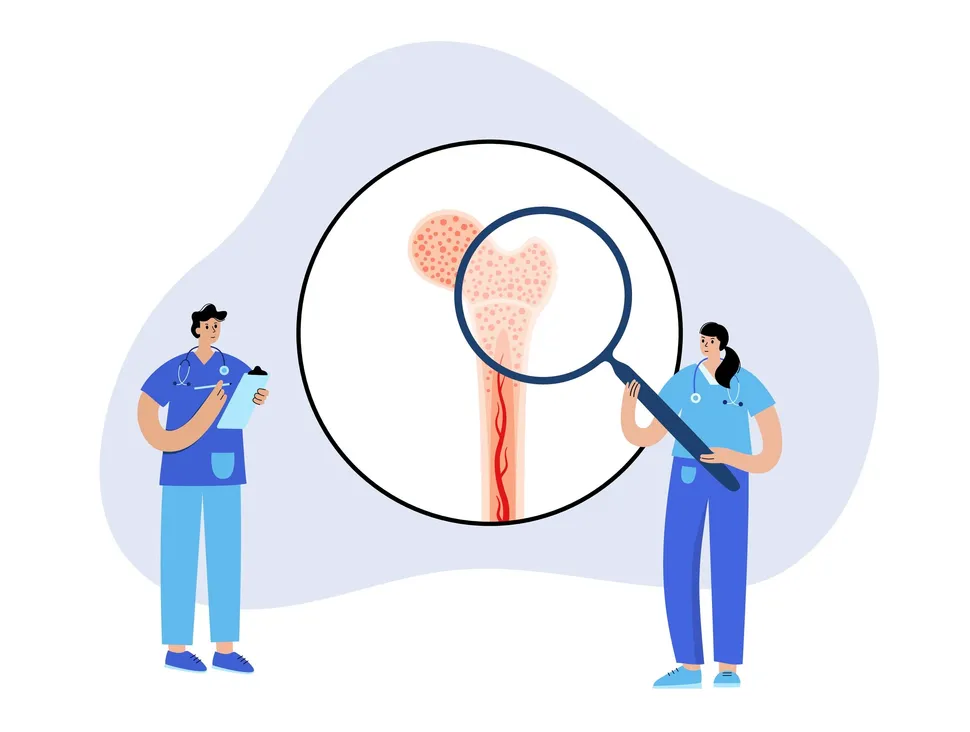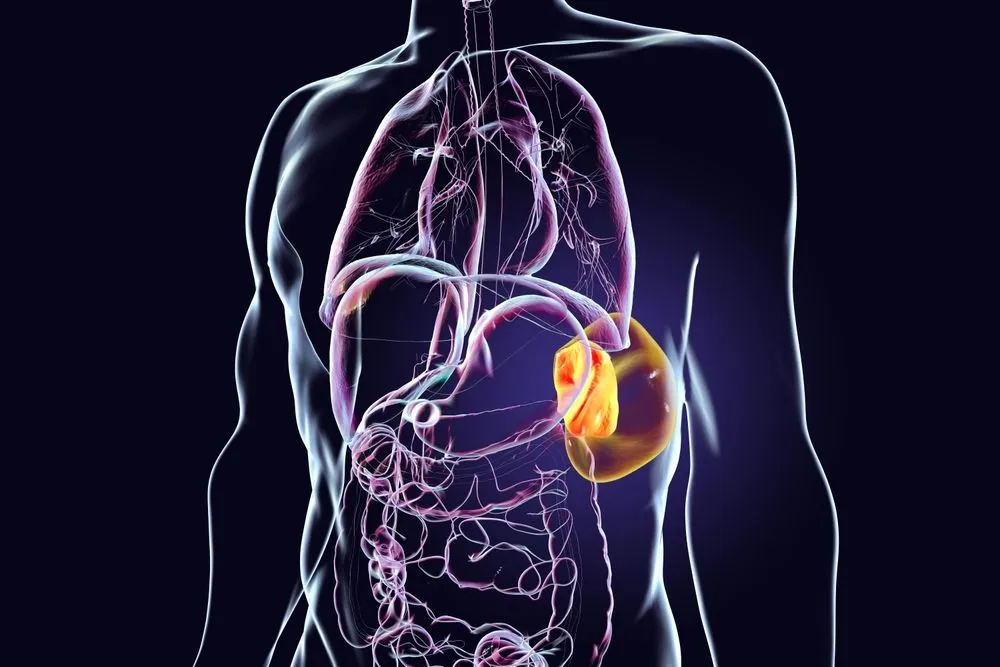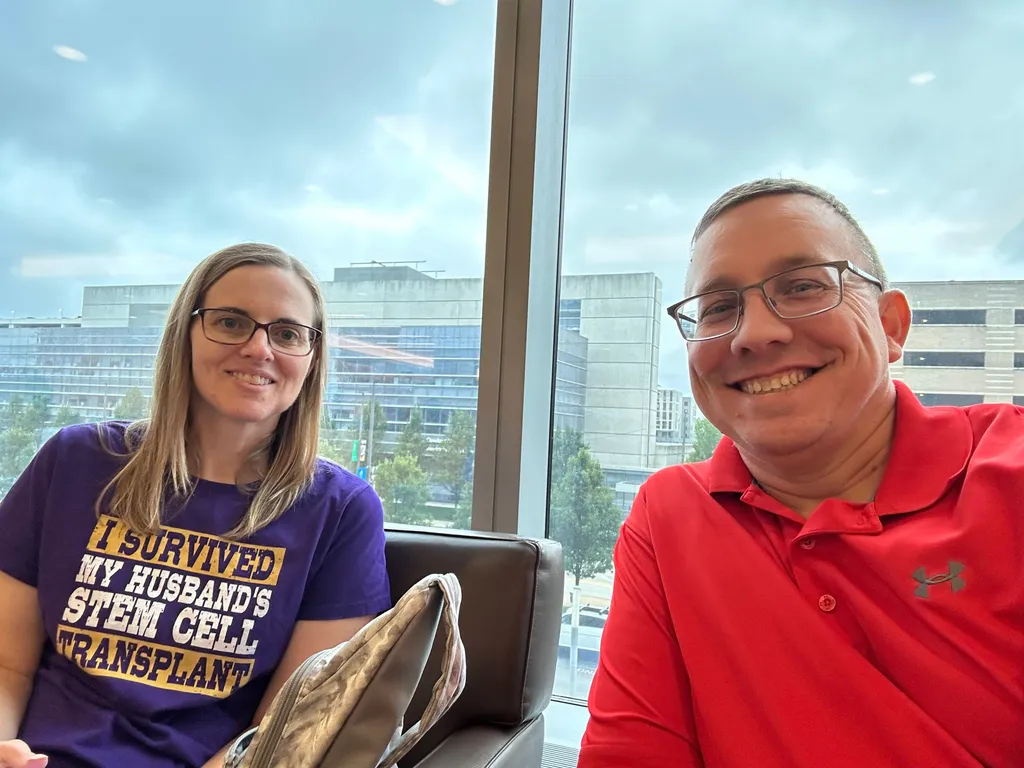What You Need to Know About Myelofibrosis

If you or a loved one has recently been diagnosed with myelofibrosis, understanding the basics of the disease can be a helpful first step. While this article provides a general overview of myelofibrosis, it's important to consult with a healthcare professional for personalized guidance. For more in-depth information, consider exploring resources such as our 101 Myelofibrosis articles.
What is Myelofibrosis?
Myelofibrosis (MF) is a type of blood cancer that affects the bone marrow, the tissue inside bones that produces blood cells. In myelofibrosis, the bone marrow becomes scarred (fibrosis), which disrupts the production of normal blood cells. This can lead to several health issues, including anemia, an enlarged spleen (splenomegaly), and an enlarged liver (hepatomegaly).
What Causes Myelofibrosis?
Myelofibrosis is often driven by mutations in specific genes, most commonly JAK2, CALR, or MPL. These mutations cause abnormal signaling in the bone marrow cells, leading to excessive production of certain blood cells and inflammatory substances.
What are the Signs and Symptoms of Myelofibrosis?
People with myelofibrosis may experience a range of symptoms that can impact their quality of life, including:
- Fatigue
- Abdominal discomfort
- Night sweats
- Bone pain
- Itchy skin (pruritus)
How Many People Are Affected by Myelofibrosis?
Myelofibrosis is a rare disease, affecting about 2 to 4 people per 100,000 worldwide and about 4 to 6 people per 100,000 in the United States.
How is Myelofibrosis Diagnosed?
Diagnosing myelofibrosis typically involves a series of tests, including:
- Patient History and Physical Exam: Evaluating symptoms and checking for an enlarged spleen.
- Blood Tests: Checking blood cell counts and looking for abnormal cells.
- Bone Marrow Biopsy: Examining bone marrow tissue for fibrosis and abnormal cells.
- Genetic Testing: Identifying mutations in the JAK2, CALR, or MPL genes.
What Are Treatment Options for Myelofibrosis?
Treatment for myelofibrosis depends on the severity of the disease and the patient’s symptoms. The main goal is to manage symptoms and slow the progression of the disease. Treatment options include:
- JAK Inhibitors: Medications like ruxolitinib, fedratinib, pacritinib, and momelotinib that target the abnormal signaling caused by JAK2 mutations.
- Blood Transfusions: To manage anemia.
- Splenectomy: Surgery to remove the spleen in severe cases of splenomegaly.
- Stem Cell Transplant: The only potential cure, but suitable for only a small number of patients due to the risks involved.
The Importance of Early Treatment
Research shows that early treatment for myelofibrosis, especially when the patient is still at a lower-risk stage, can lead to better outcomes. Early treatment with JAK inhibitors has been shown to improve symptoms and reduce the size of the spleen more effectively than delaying treatment.
Living with Myelofibrosis
Living with myelofibrosis can be challenging due to the symptoms and the need for ongoing treatment. However, many patients find ways to manage their symptoms and maintain a good quality of life. Regular follow-ups with a healthcare provider, staying informed about new treatments, and connecting with support groups can be very helpful.
Learn More About Myelofibrosis and Take Charge of Your Care with HealthTree
To stay informed about the latest developments in myelofibrosis research and treatment, we encourage you to sign up for our newsletter and register for our upcoming webinars. By connecting with others who have similar experiences, you can find support, share insights, and work together towards better outcomes.
SUBSCRIBE TO MYELOFIBROSIS NEWSLETTER
Sources:
If you or a loved one has recently been diagnosed with myelofibrosis, understanding the basics of the disease can be a helpful first step. While this article provides a general overview of myelofibrosis, it's important to consult with a healthcare professional for personalized guidance. For more in-depth information, consider exploring resources such as our 101 Myelofibrosis articles.
What is Myelofibrosis?
Myelofibrosis (MF) is a type of blood cancer that affects the bone marrow, the tissue inside bones that produces blood cells. In myelofibrosis, the bone marrow becomes scarred (fibrosis), which disrupts the production of normal blood cells. This can lead to several health issues, including anemia, an enlarged spleen (splenomegaly), and an enlarged liver (hepatomegaly).
What Causes Myelofibrosis?
Myelofibrosis is often driven by mutations in specific genes, most commonly JAK2, CALR, or MPL. These mutations cause abnormal signaling in the bone marrow cells, leading to excessive production of certain blood cells and inflammatory substances.
What are the Signs and Symptoms of Myelofibrosis?
People with myelofibrosis may experience a range of symptoms that can impact their quality of life, including:
- Fatigue
- Abdominal discomfort
- Night sweats
- Bone pain
- Itchy skin (pruritus)
How Many People Are Affected by Myelofibrosis?
Myelofibrosis is a rare disease, affecting about 2 to 4 people per 100,000 worldwide and about 4 to 6 people per 100,000 in the United States.
How is Myelofibrosis Diagnosed?
Diagnosing myelofibrosis typically involves a series of tests, including:
- Patient History and Physical Exam: Evaluating symptoms and checking for an enlarged spleen.
- Blood Tests: Checking blood cell counts and looking for abnormal cells.
- Bone Marrow Biopsy: Examining bone marrow tissue for fibrosis and abnormal cells.
- Genetic Testing: Identifying mutations in the JAK2, CALR, or MPL genes.
What Are Treatment Options for Myelofibrosis?
Treatment for myelofibrosis depends on the severity of the disease and the patient’s symptoms. The main goal is to manage symptoms and slow the progression of the disease. Treatment options include:
- JAK Inhibitors: Medications like ruxolitinib, fedratinib, pacritinib, and momelotinib that target the abnormal signaling caused by JAK2 mutations.
- Blood Transfusions: To manage anemia.
- Splenectomy: Surgery to remove the spleen in severe cases of splenomegaly.
- Stem Cell Transplant: The only potential cure, but suitable for only a small number of patients due to the risks involved.
The Importance of Early Treatment
Research shows that early treatment for myelofibrosis, especially when the patient is still at a lower-risk stage, can lead to better outcomes. Early treatment with JAK inhibitors has been shown to improve symptoms and reduce the size of the spleen more effectively than delaying treatment.
Living with Myelofibrosis
Living with myelofibrosis can be challenging due to the symptoms and the need for ongoing treatment. However, many patients find ways to manage their symptoms and maintain a good quality of life. Regular follow-ups with a healthcare provider, staying informed about new treatments, and connecting with support groups can be very helpful.
Learn More About Myelofibrosis and Take Charge of Your Care with HealthTree
To stay informed about the latest developments in myelofibrosis research and treatment, we encourage you to sign up for our newsletter and register for our upcoming webinars. By connecting with others who have similar experiences, you can find support, share insights, and work together towards better outcomes.
SUBSCRIBE TO MYELOFIBROSIS NEWSLETTER
Sources:

about the author
Jimena Vicencio
Jimena is an International Medical Graduate and a member of the HealthTree Writing team. She has a passion for languages and is currently learning Japanese. In her free time, she loves playing with her cats. Jimena is also pursuing a bachelor's degree in journalism.
More on Navigating Your Health
Trending Articles
Get the Latest Myelofibrosis Updates, Delivered to You.
By subscribing to the HealthTree newsletter, you'll receive the latest research, treatment updates, and expert insights to help you navigate your health.
Together we care.
Together we cure.
3x Faster.










